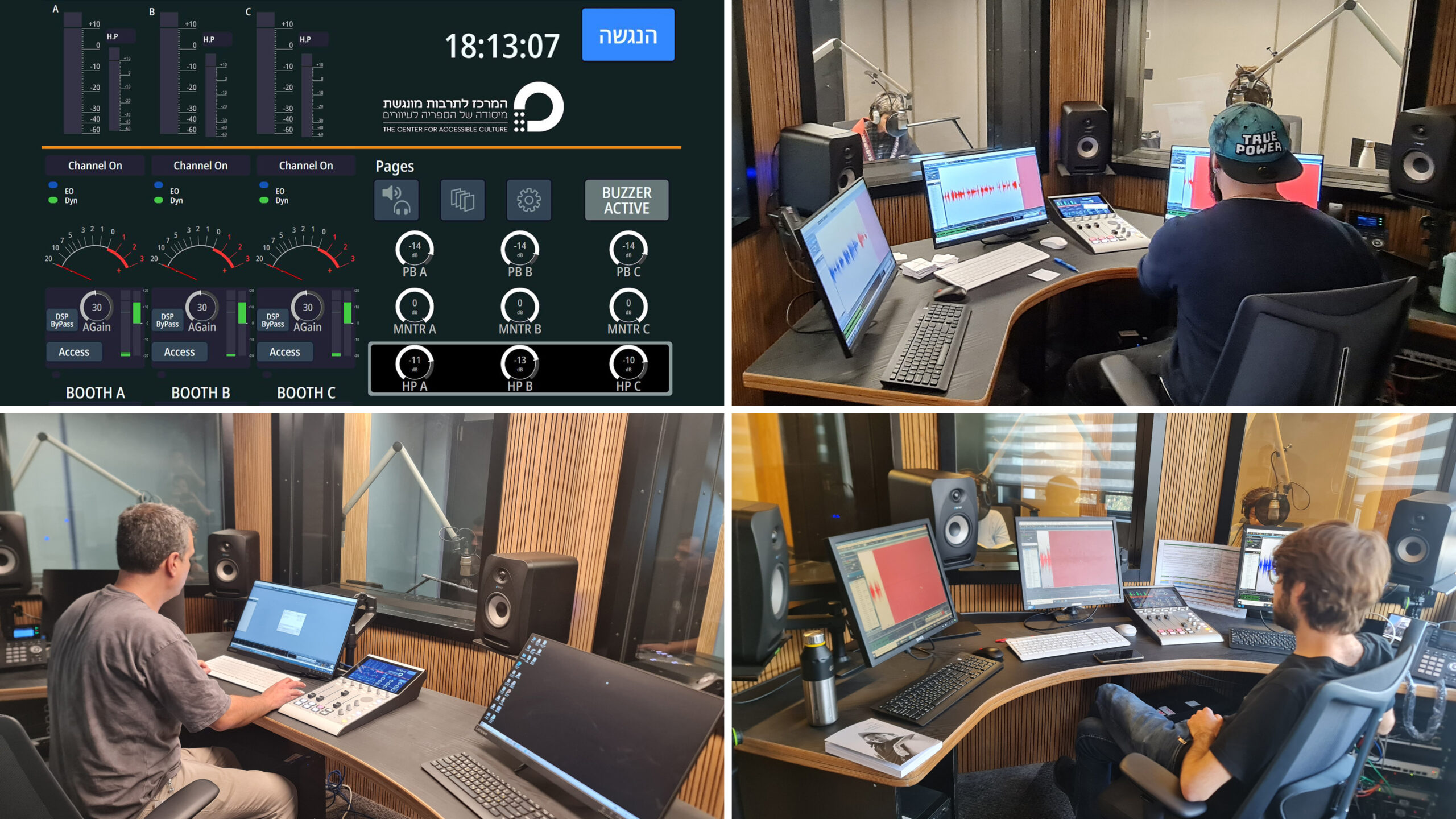Israel’s Center for Accessible Culture, formerly known as the Central Library for the Blind (CLFB), has chosen DHD SX2 radio consoles as the core of a studio modernization project at its headquarters in Tel Aviv in a project integrated by Jerusalem-based audio specialist Broadcast Design Ltd.
“The Center for Accessible Culture makes classical literature, periodicals and textbooks accessible to blind, visually impaired and handicapped people,” says Broadcast Design founder and CEO Micha Blum. “The organisation’s technical operations team were keen to replace outdated equipment and contacted us to ask if we could provide a system that conformed to the existing workflow.
“A key challenge was how to provide visually impaired members of the production team with a solution that was really easy for them to use. We set up a demo studio based on a DHD SX2 control module plus an XC3 IP core. The SX2 has a larger number of physical buttons allowing customisable direct access which was important for visually impaired operators. Additional features included Audio over IP studio connectivity using Audinate Dante.
The SX2 console is based on a four-fader central module. Integral display screens allow operators to see exactly how their console is performing both from connectivity and signal level perspectives. The central module gives access to the most important audio inputs and outputs. A microphone input and headphone output are included, and loudspeakers can be connected directly to this unit.
“We left the demo system onsite for several weeks during which it proved popular with sighted and sight-impaired CLFB operators as well as the technical support team,” Blum notes. “Three complete systems were ordered for use across nine studios. The system is configured as one fader per studio, each on its own bus. This proved easy and flexible for the CLFB team to use. Physical faders and buttons are ideal in this application. DHD’s Assist App potentially allows a technician to provide online support even from home via a browser-based mixer control license. Each narrator has access to a cough-mute button with a clear indication that this has been activated.
“An important factor as to why we chose DHD systems is that they are highly customizable. It is very easy to configure a channel strip with direct talkback-on and playback-mute per studio. On top of this came a request for precise control of the balance of multiple loudspeakers in each control room and playback level from a PC workstation in each room. All of this was configured perfectly in just a few minutes.
The consoles can be expanded by adding one or more module with six motorised faders each. Central and fader modules each incorporate a 10.1 inch multi-touch display showing relevant configuration and operating parameters. Functions such as loudness metering and talkback to other DHD mixers are also supported.
“The DHD system is so flexible that we were even able to give each control button a unique identifying sound so that it could be used with confidence by a non-sighted operator. All of this is achievable within the DHD system by configuration,” Blum concludes. “The inclusion of AoIP into the facility opened new options like the ability to record to any specific studio from any computer. It also allowed backup recording, including a server which can capture the output from all studios at once.”




















